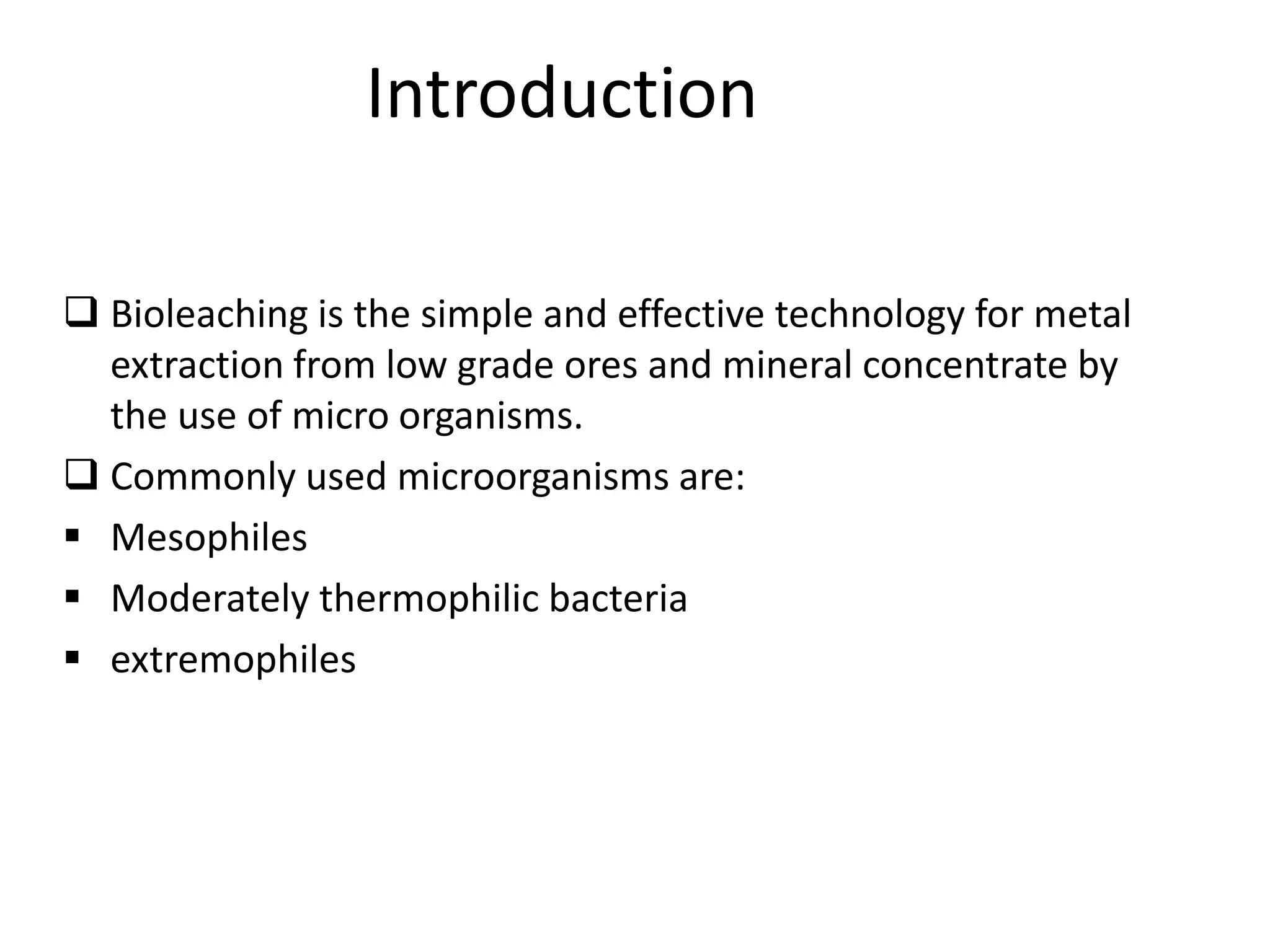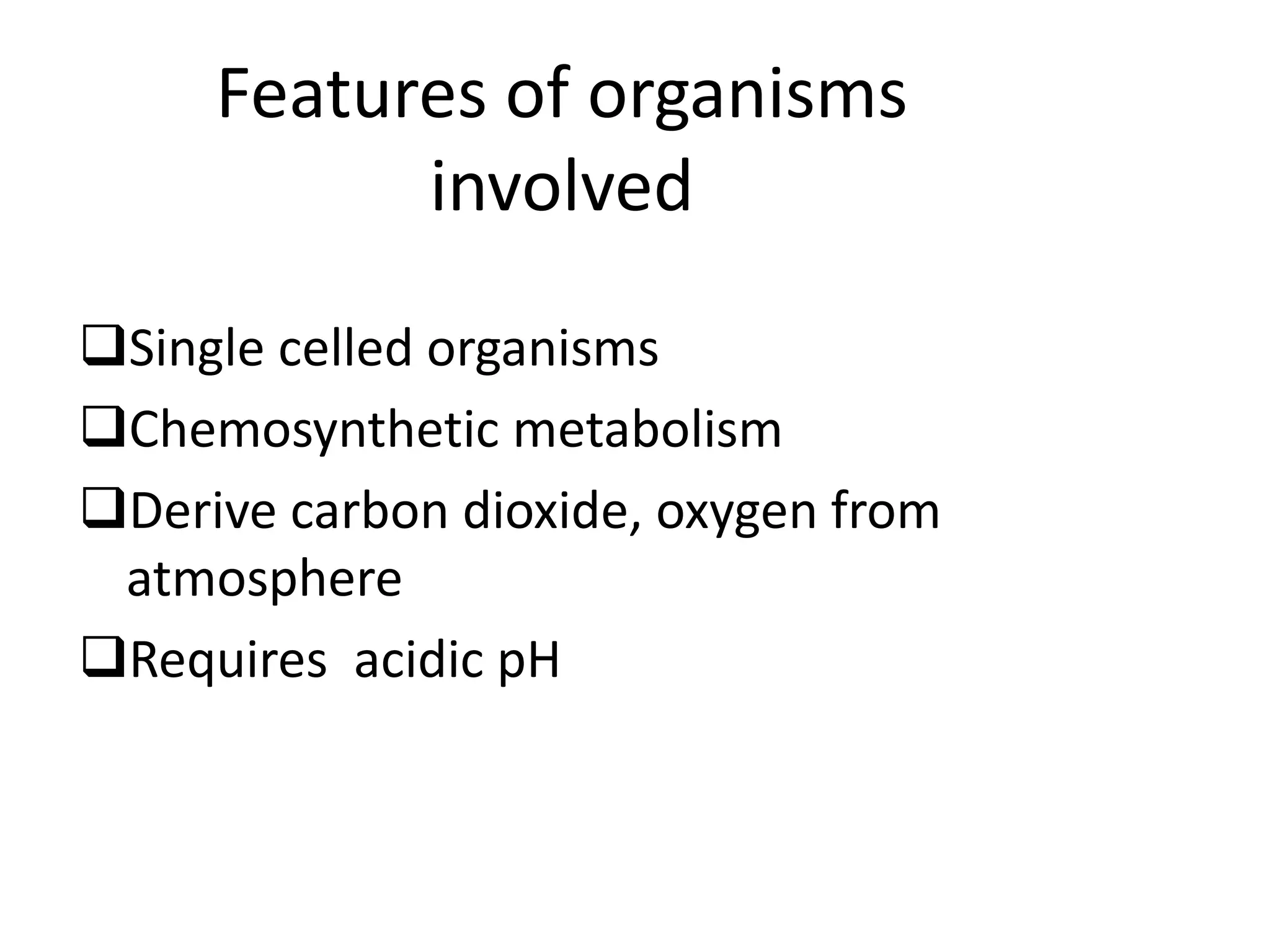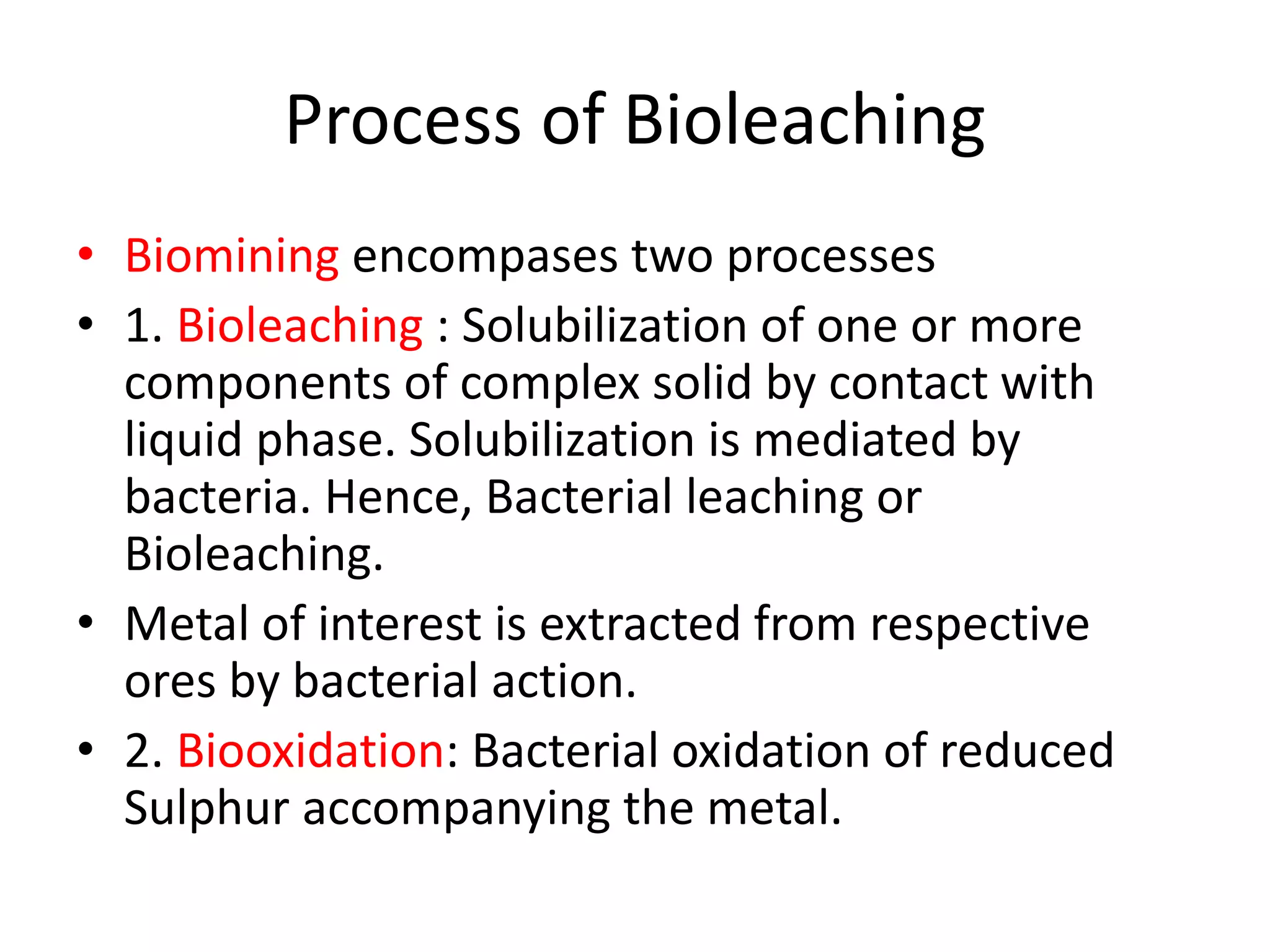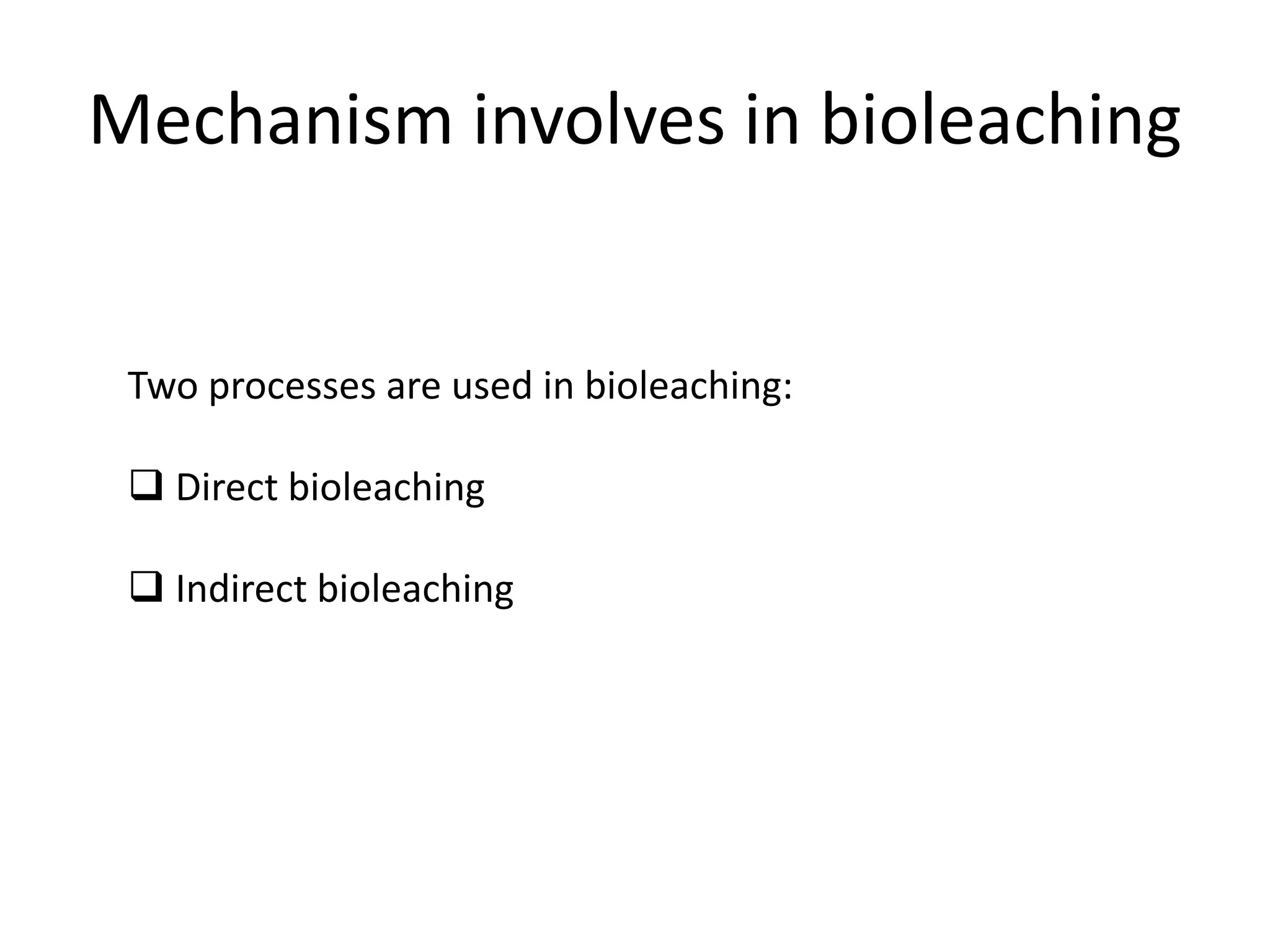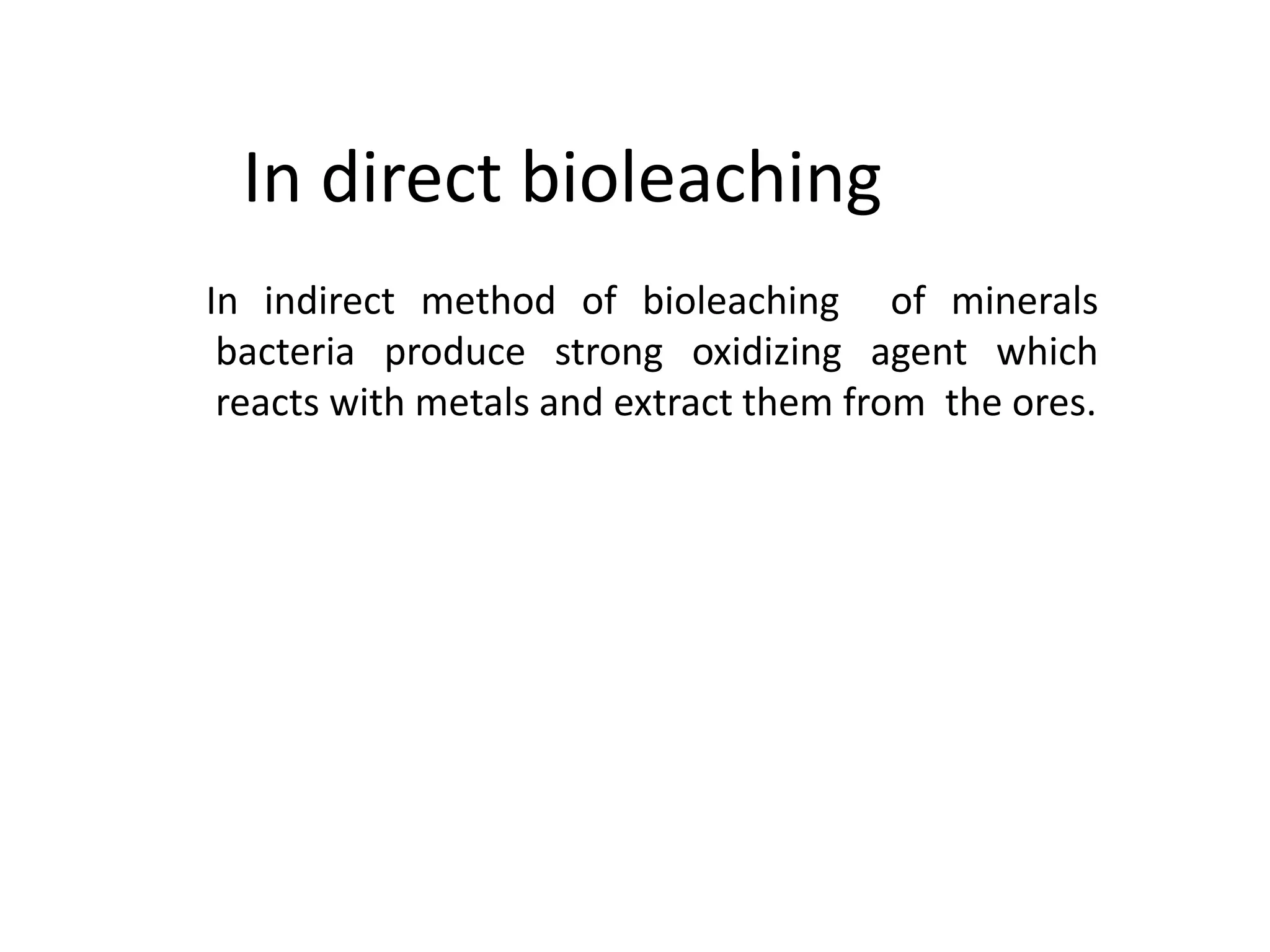Bioleaching uses microorganisms like bacteria and fungi to extract metals from ores and concentrates. It has been used for over 3000 years to extract copper. Modern commercial bioleaching uses three main methods - slope leaching, in-situ leaching, and heap leaching. Key factors that affect bioleaching include choice of bacteria, ore composition, temperature, acidity, aeration and solid-liquid ratio. Bioleaching is a simple, inexpensive and environmentally friendly alternative to smelting for extracting metals from low-grade ores.

